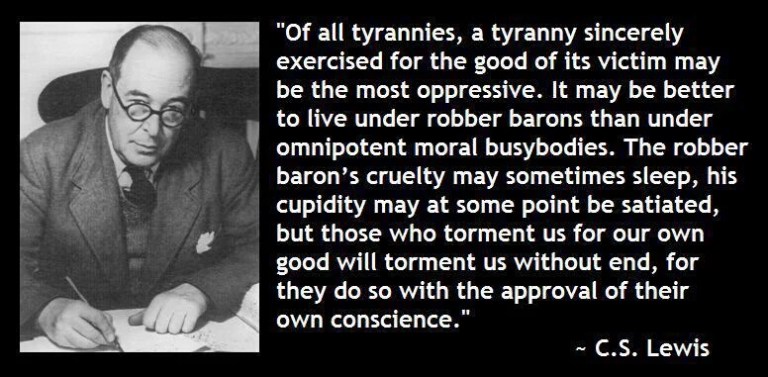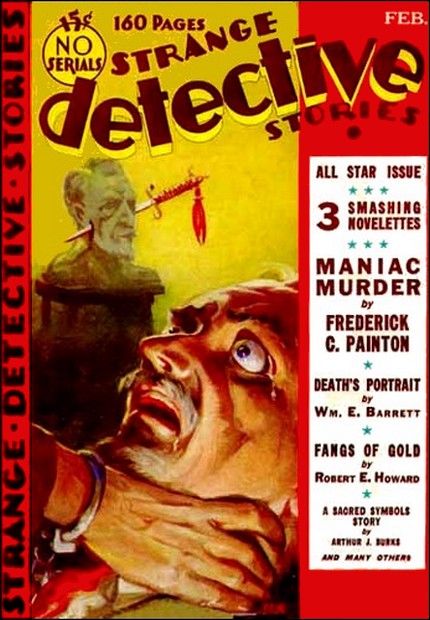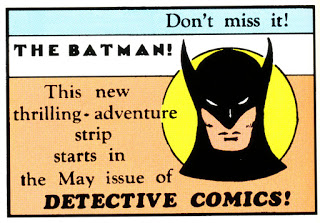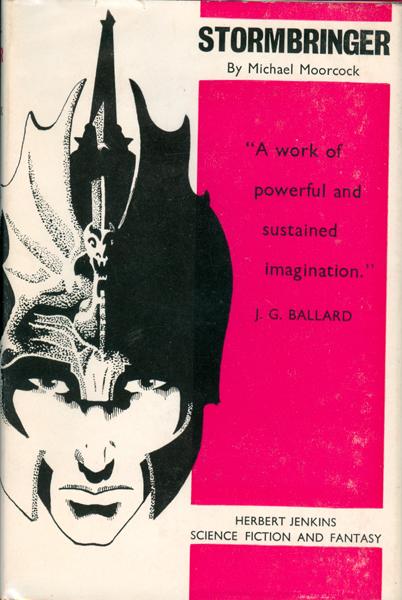Sensor Sweep: C. S. Lewis, Dennis Wheatley, Strange Detective, Convention De-platforming
Monday , 3, December 2018 Sensor Sweep 1 CommentFiction (Adventures Fantastic): Tolkien was the subject of yesterday’s post. He was a member of the famed group of writers known as the Inklings.  Another Inkling was Tolkien’s close friend C. S. Lewis, who was born this day, November 29, in the year 1898. In light of yesterday’s post, I thought the above quote was quite appropriate.
Another Inkling was Tolkien’s close friend C. S. Lewis, who was born this day, November 29, in the year 1898. In light of yesterday’s post, I thought the above quote was quite appropriate.
Clive Staples Lewis was the author of The Chronicles of Narnia as well as The Space Trilogy and a few shorter works of the fantastic. Most of his writing was nonfiction and dealt with theology.
Fiction (Easily Distracted): The Prisoner in the Mask by Dennis Wheatley (1957)
Only Wheatley had the authorial confidence (or arrogance) to end a novel with the lines “….After a decent interval we can be married with wedding bells  and live happily ever after.'”
and live happily ever after.'”
No one in a Wheatley novel lives happily ever after. The most they can hope for are pleasurable interludes before the next pendulum swing of Fortune again lands them in the soup.

Fiction (Player None): If the collection I have is to be believed, Howard wasn’t a huge fan of detective stories, as he didn’t like their formulaic structure. That might be considered somewhat ironic, as Howard himself wasn’t a stranger for a formulaic structure himself. In either case, Howard did pen a couple of detective stories which aren’t actually all that bad. His main super sleuth is Steve Harrison, a hard-boiled dick working in the Oriental quarters. The stories he stars in blend together the Howard .
Cinema (Black Gate): Two years ago this week, I posted a review of Dark Star, the first movie from director John Carpenter. Last month, I closed off  my chronological amble through his theatrical feature films with a review of The Ward. To celebrate completing this 40,000-word-plus enterprise, I’ve put together a few closing thoughts on my five favorite John Carpenter flicks. Trying to do a complete list of the films from best to worst isn’t an easy task: I’d end up with too many ties, too much second-guessing, too many regrets. Nor do I want to dwell on the negative at the end of this series — dealing with The Ward was negativity enough! So this here is nothing but praise coming from some guy who’s only credential is “posts on a website.”
my chronological amble through his theatrical feature films with a review of The Ward. To celebrate completing this 40,000-word-plus enterprise, I’ve put together a few closing thoughts on my five favorite John Carpenter flicks. Trying to do a complete list of the films from best to worst isn’t an easy task: I’d end up with too many ties, too much second-guessing, too many regrets. Nor do I want to dwell on the negative at the end of this series — dealing with The Ward was negativity enough! So this here is nothing but praise coming from some guy who’s only credential is “posts on a website.”
Writing (Pulp Archivist): Writing Tips from Louis L’amour #1.
Fiction (Bushisff): I’ve been thinking about magic lately, and I’ve got a post brewing…but it’s not quite ready yet. It did bring me back around to thinking about John Bellairs, however, and his The Face in the Frost.
In case you’re unfamiliar with them, Bellairs was mainly a writer of young adult gothic mystery novels, and The Face in the Frost was his novular foray into a more mature adult horror-fantasy.
When I get some more time (that grand old refrain!), I’d like to check out some of these gothic mystery stories of his. But until then, I feel like The Face in the Frost still had some meat on the bone and warrants some discussion.
Culture Wars (Kairos): Author Jon Del Arroz reports on yet another deplatforming of a major science fiction author from a convention. This time, it was astrophysicist and Reason Magazine editor Gregory Benford who ran afoul of the SJW hatemob.
Gregory Benford thought he was just speaking on another panel, something he’d done dozens of times over the last 40 years of his career, especially after his novel Timescape won the Nebula Award and has since been hailed as one of the greatest science fiction novels ever written.
Culture Wars (Kairos): Alex over at Amatopia reports on the latest round of Tolkien bashing instigated by the grandfather of fantasy’s soyfed, unjustifiably smug inferiors.
Everything that is good, true, noble, and beautiful must be destroyed. The recent denunciation of the legend J.R.R. Tolkien and his masterwork The Lord of the Rings is just the latest incarnation of this madness.
Sci-fi author Andy Duncan is the most recent destroyer to whine about Tolkien’s supposed racism.
Culture Wars (Walker’s Retreat): I saw the writing on the wall with my local scene two years ago (see the Convergence 2016, Day Four post), and resolved then to not attend any convention unless I was specifically invited and the con paid my way. The insanity has only worsened, as I expected, as the madness afflicting the local Secret Masters of Fandom only makes them double-down on the fraud that is Social Justice. I have no desire to be among a population increasingly resembling the targets of the Inquisition, so I took my leave. I don’t miss it at all, and I have no plans to return.
Fiction (Reactionary Times): Margret Atwood is selling out. After having insisted for twenty years that A Handmaid’s Tale was a completely finished story, she is now putting pen to paper in order to write a sequel. Or possibly have someone else write it for her. Doesn’t really matter either way so long as this thing is in B&N before the next season starts on HULU.

Comic Books (RMWC Reviews): Superheroes live and die by their visual designs. A silhouette, a stance, a color combination, a great hero design stands the test of time and evolves into a form best suited for the character. Sometimes the creators knock it out of the park on the first try, other times it takes several iterations to get to something iconic,
Artists (DMR Books): James Philip Cawthorn was born in 1929 in the United Kingdom. As related in this interview, Jim was illustrating SFF fanzines–primarily ones devoted to ERB–and had befriended the teenaged Michael Moorcock by the mid-1950s. Influenced by artists ranging from Michelangelo  to Burne Hogarth, Cawthorn soon made the jump across the pond, illustrating the legendary sword and sorcery fanzine, Amra. It was in the pages of Amra that Jim produced the first ever map of Leiber’s Newhon
to Burne Hogarth, Cawthorn soon made the jump across the pond, illustrating the legendary sword and sorcery fanzine, Amra. It was in the pages of Amra that Jim produced the first ever map of Leiber’s Newhon
Time to move Timescape up on “to read” pile…